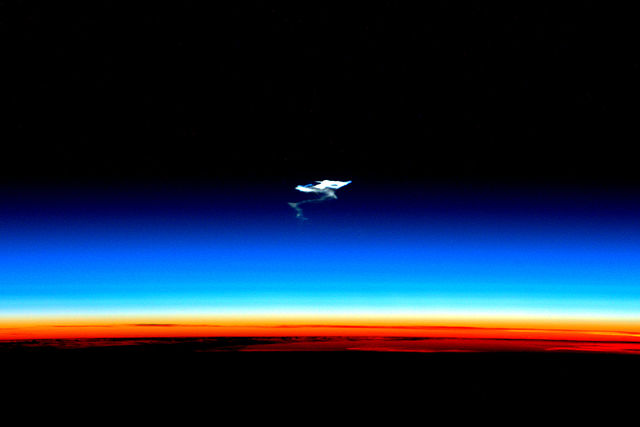The mesosphere is the third layer of the atmosphere, directly above the stratosphere and directly below the thermosphere. In the mesosphere, temperature decreases as altitude increases. This characteristic is used to define limits: it begins at the top of the stratosphere, and ends at the mesopause, which is the coldest part of Earth's atmosphere, with temperatures below −143 °C. The exact upper and lower boundaries of the mesosphere vary with latitude and with season, but the lower boundary is usually located at altitudes from 47 to 51 km above sea level, and the upper boundary is usually from 85 to 100 km.

Earth's atmosphere as it appears from space, as bands of different colours at the horizon. From the bottom, afterglow illuminates the troposphere in orange with silhouettes of clouds, and the stratosphere in white and blue. Next the mesosphere (pink area) extends to just below the edge of space at one hundred kilometers and the pink line of airglow of the lower thermosphere (dark), which hosts green and red aurorae over several hundred kilometers.
Afterglow of the troposphere (orange), the stratosphere (blue) and the mesosphere (dark) at which atmospheric entry begins, leaving smoke trails, such as in this case of a spacecraft reentry.
An astronaut onboard the International Space Station observes lightning at the horizon extending into the mesosphere as red sprite just below the line of airglow.
Noctilucent clouds (not to be mistaken with the slightly higher up airglow), at the upper edge of the mesosphere.
An atmosphere is a layer of gasses that envelop an astronomical object, held in place by the gravity of the object. A planet retains an atmosphere when the gravity is great and the temperature of the atmosphere is low. A stellar atmosphere is the outer region of a star, which includes the layers above the opaque photosphere; stars of low temperature might have outer atmospheres containing compound molecules.
The atmospheric gases around Earth scatter blue light (shorter wavelengths) more than light toward the red end (longer wavelengths) of the visible spectrum; thus, a blue glow over the horizon is seen when observing Earth from outer space.




